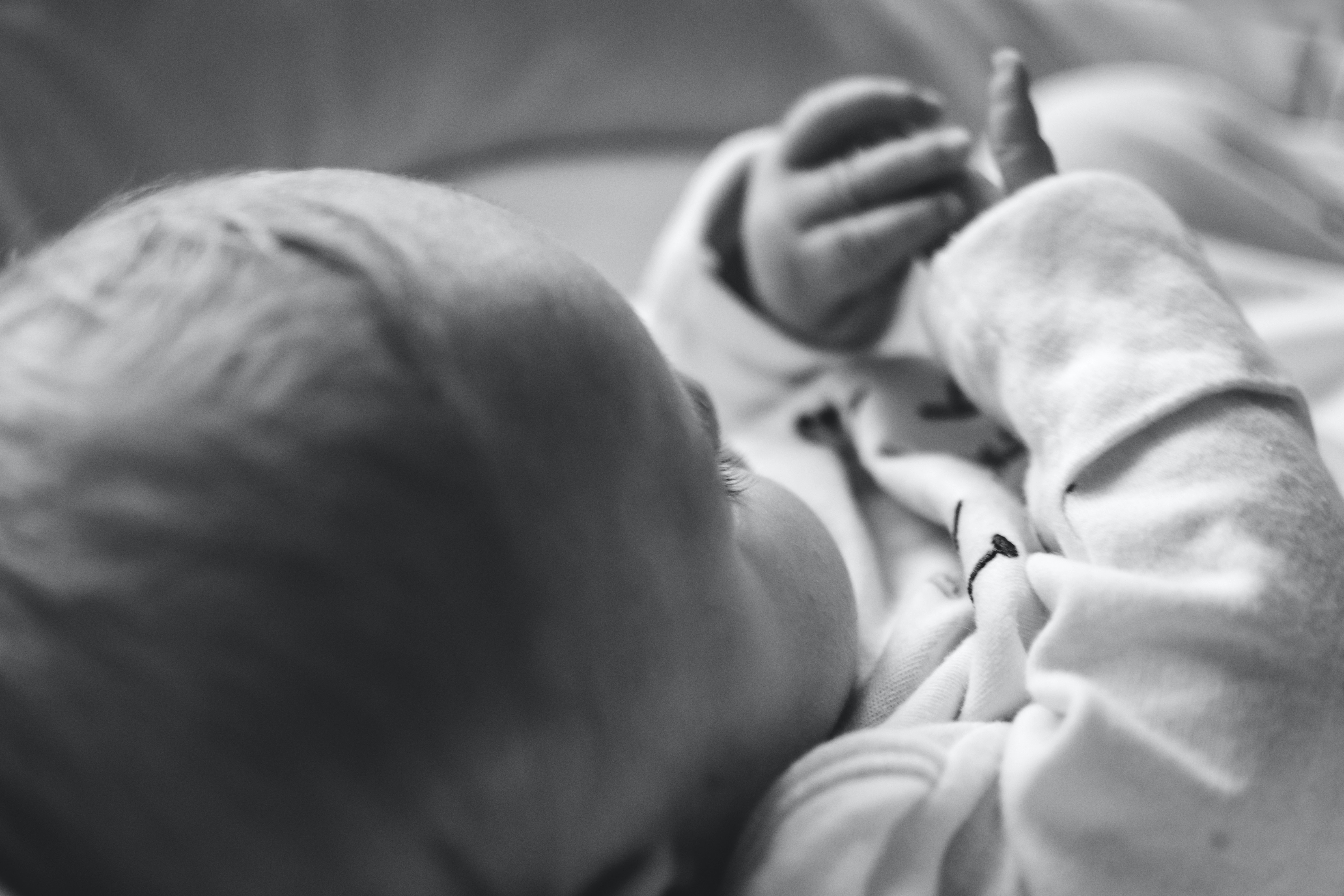Mouth exploration started in the womb and will continue to help them

Your baby’s brain began to develop soon after conception and will continue to do so into adulthood. Around the third week after conception, your baby’s brain will have started to develop, with cells dividing to make neurons and glia, which are the building blocks of the brain and nervous system.[1]
Different parts of your baby’s brain developed at different times before they were born, with one of the first areas to develop being the areas linked to movement and sensation around the mouth and tongue. Your baby’s mouth is sensitive to touch and this area remains sensitive throughout their lifetime.[2]
Sense of touch
Before they were born, your baby's curled-up position in the womb placed their hands close to their face and mouth, and as they moved they will have touched their face and perhaps even sucked their thumb. The sense of touch is one of the first to develop, and the movements and touch before they were born will have sent signals to your baby’s brain that helped them to begin to develop some understanding of their body.[3]
Body awareness
As your baby’s physical skills develop, they will move their hands and bring them to their face and mouth. Your baby will use their mouth to learn about themselves and about objects, and as they develop their physical control they will explore their hands, feet and objects with their mouth. Touching their face and exploring their hands with their mouth will help your baby to develop their awareness of their body. They will make new connections in their brain and strengthen the connections made during birth.
Understanding the world
In the next few months, your baby’s physical skills and awareness of their body will develop so that they can put their hand into their mouth straight away, rather than needing several attempts. They will continue to use their mouth to explore objects for some time, but as their physical and sensory skills develop, they will also use their hands and what they see to learn about the things around them. They will learn from moving and touching objects and will combine information from their experiences to understand the world around them.[4]
References:
[1] Konkel, L. (2018) The brain before birth: Using fMRI to explore the secrets of fetal neurodevelopment. Environmental Health Perspectives [Online] Available at: The Brain before Birth: Using fMRI to Explore the Secrets of Fetal Neurodevelopment | Environmental Health Perspectives | Vol. 126, No. 11 (nih.gov). Accessed on: 12th October 2021.
[2] Goddard-Blythe, S. (2004). The Well Balanced Child: Movement and Early Learning. Stroud: Hawthorn Press.
[3] Addyman, C (2020) The laughing baby: The extraordinary science behind what makes babies happy. London: Unbound.
[4] Goswami, U. (February 2015) Children’s Cognitive Development and Learning. [Online] Available at: Pedagogy – Learning (cprtrust.org.uk) Accessed on 12th October 2021.